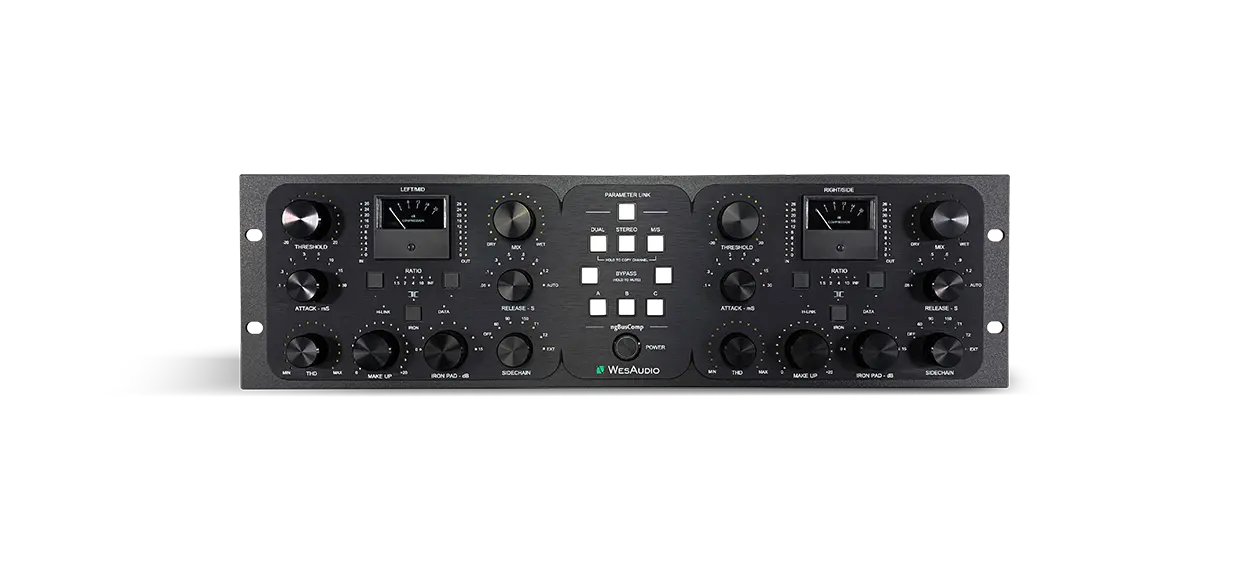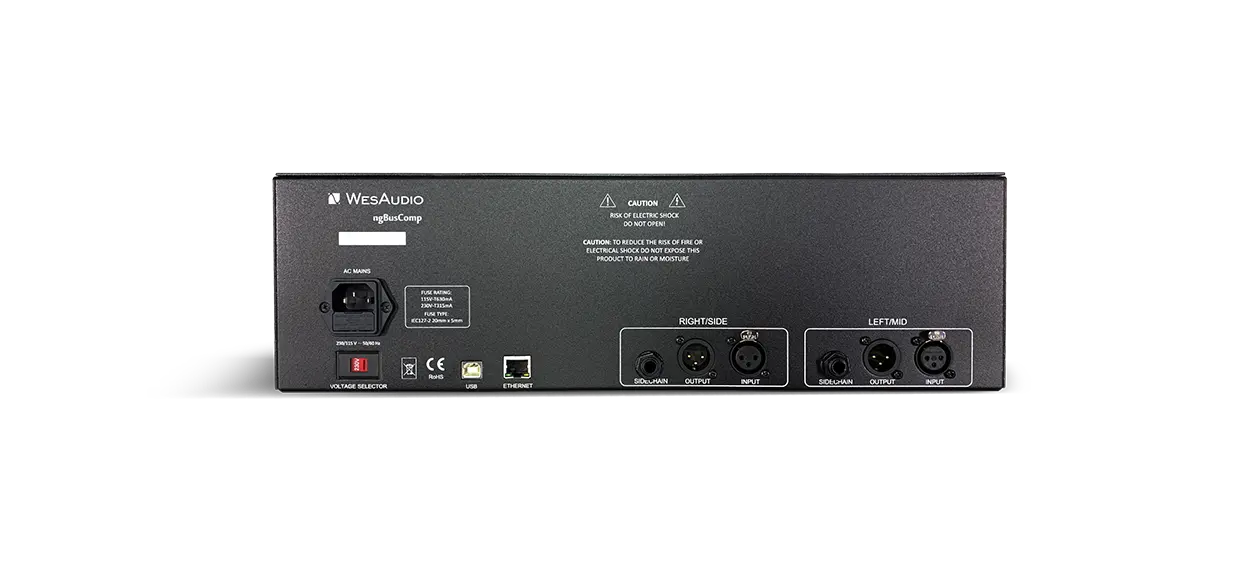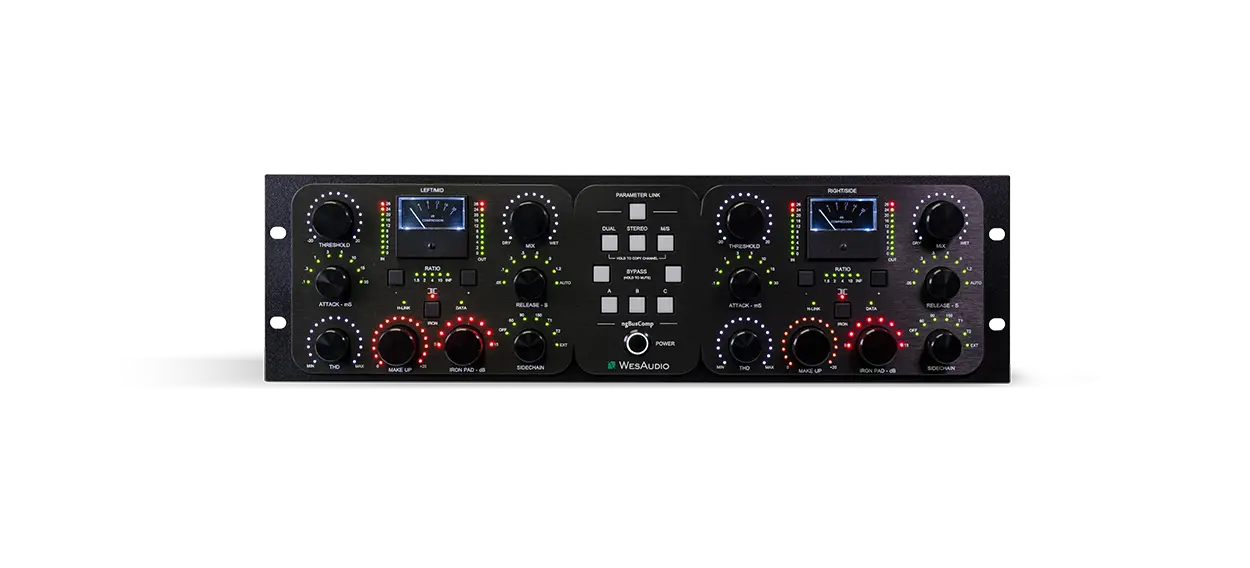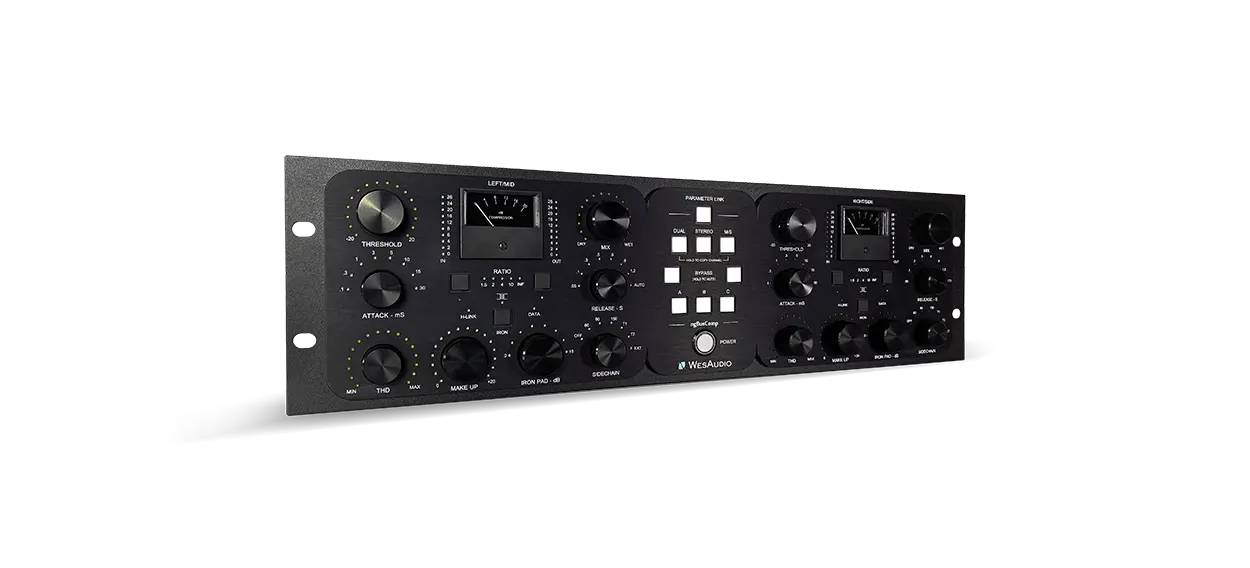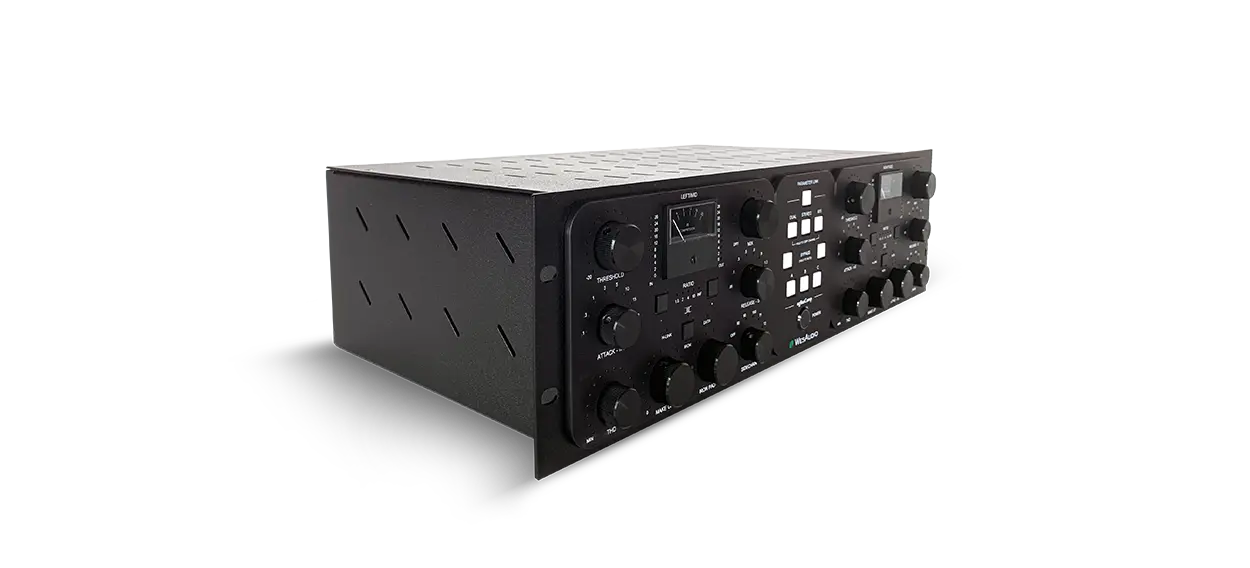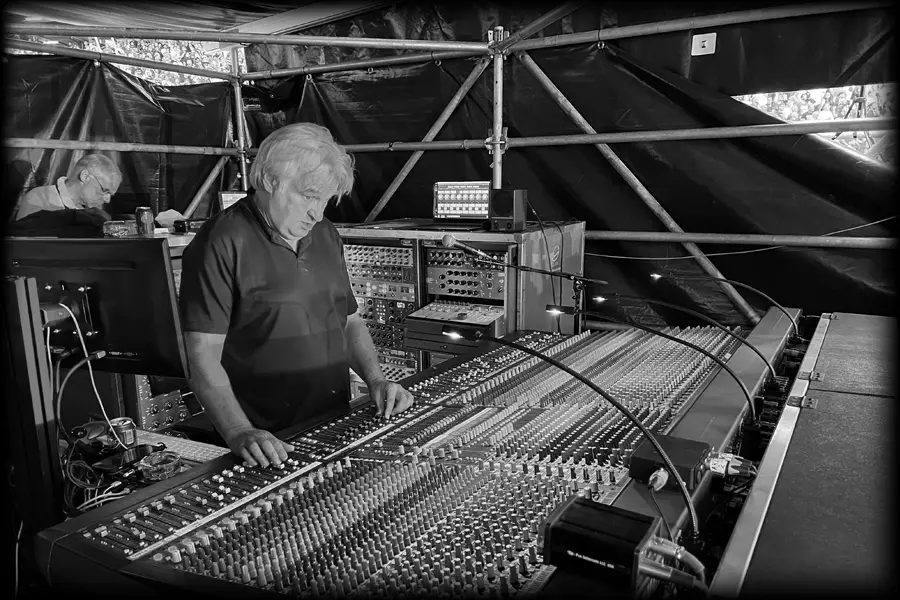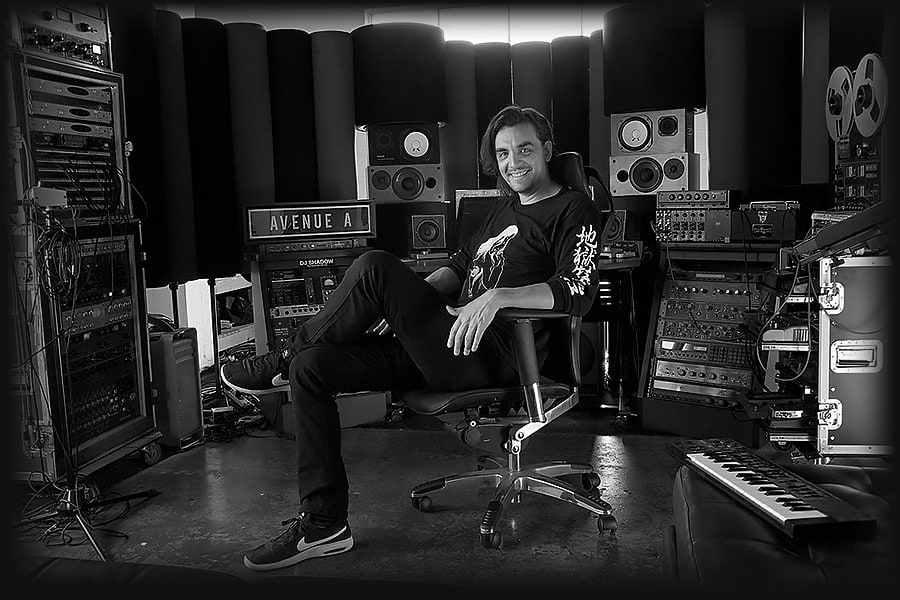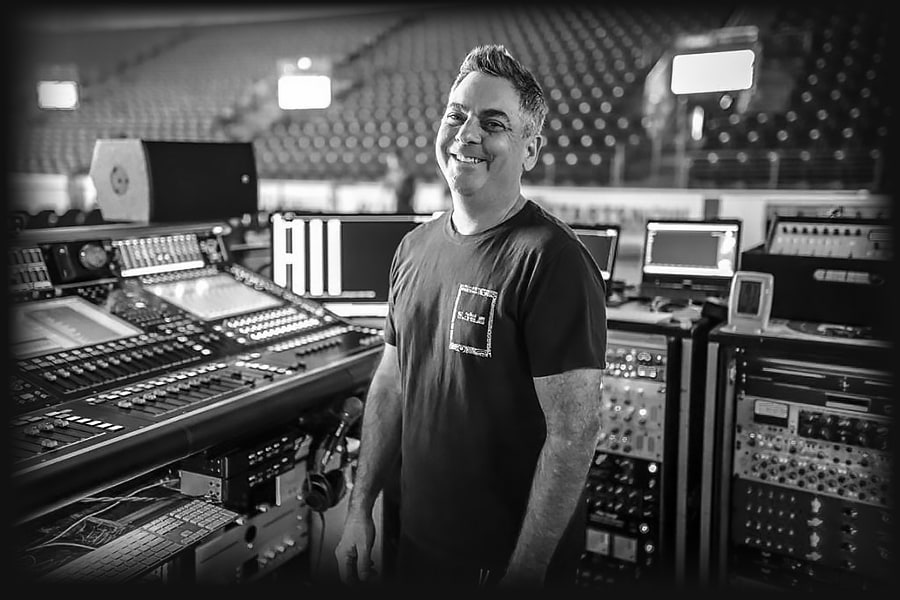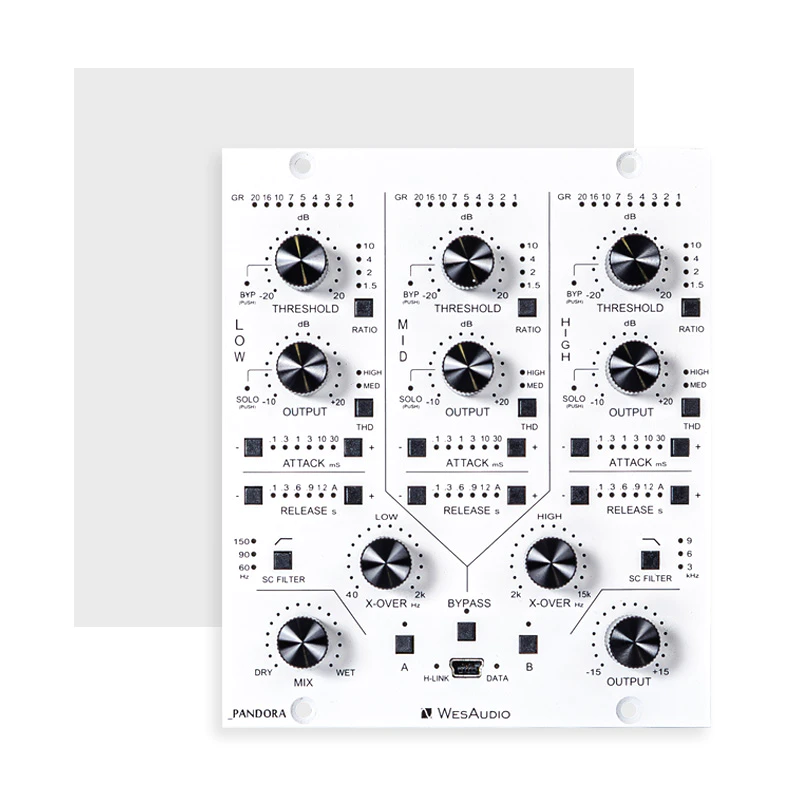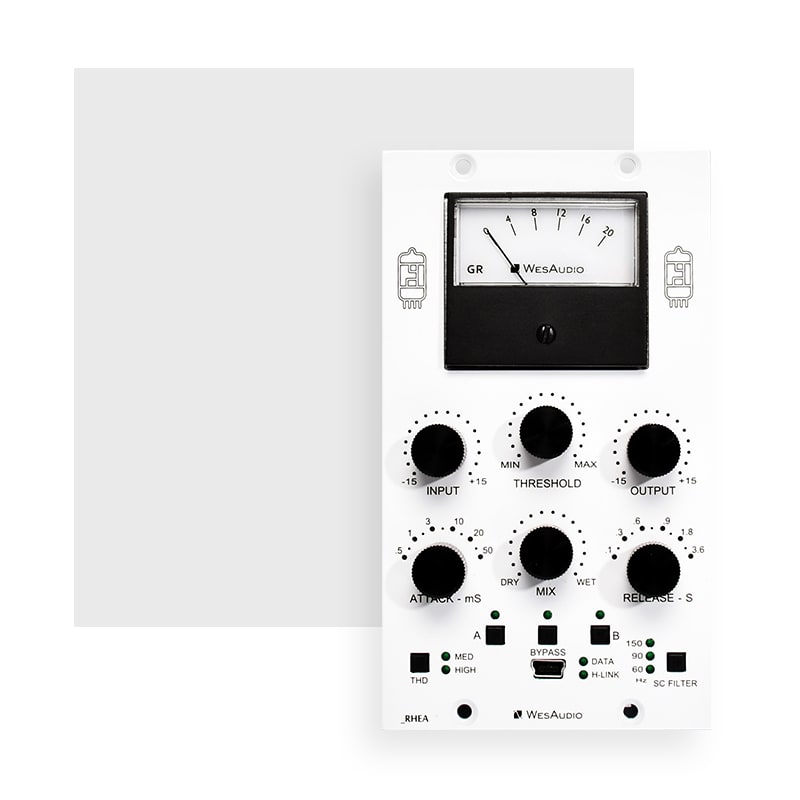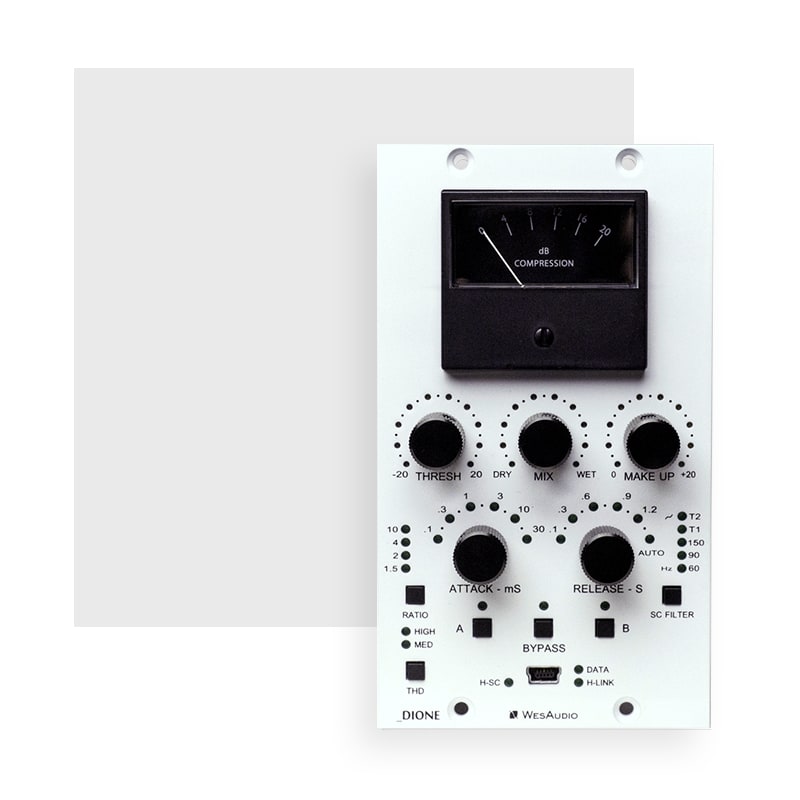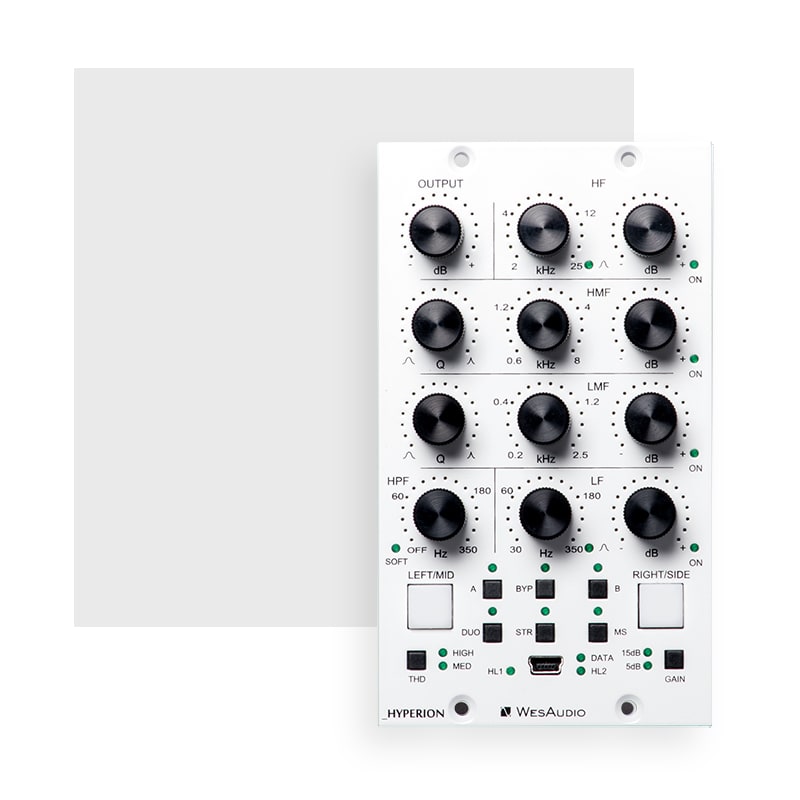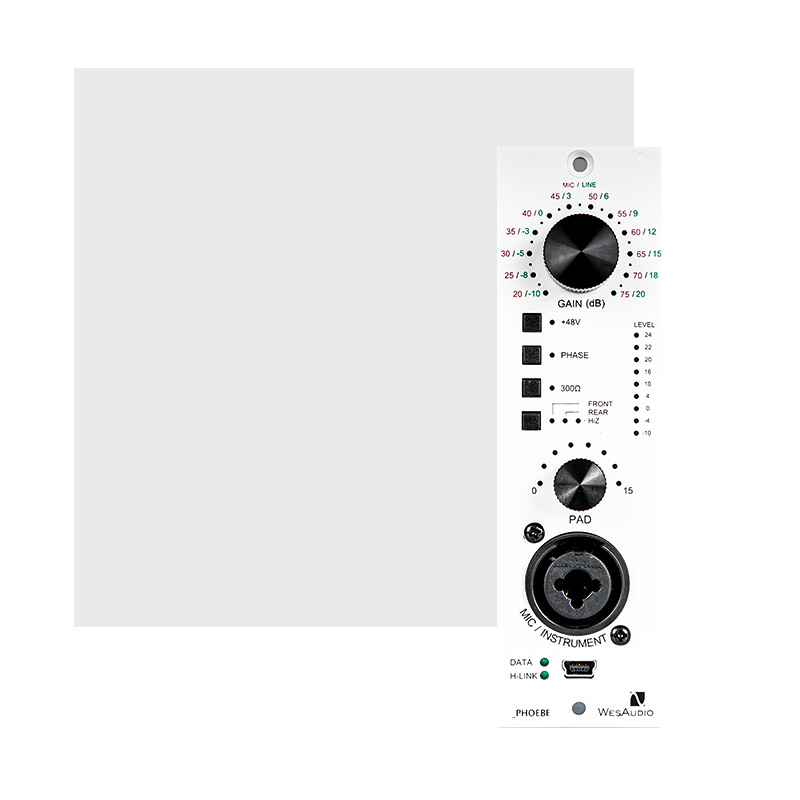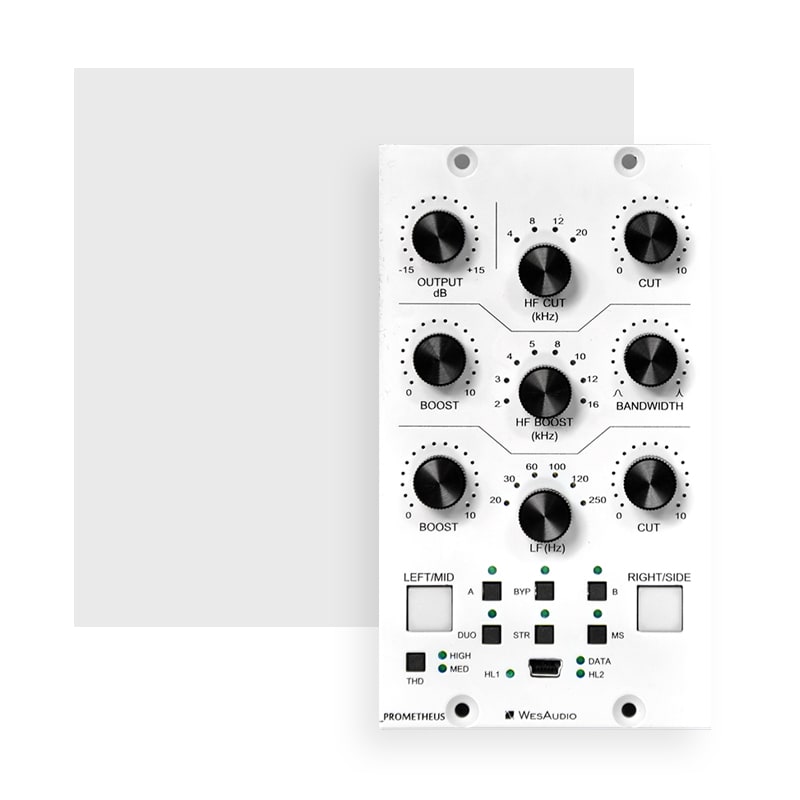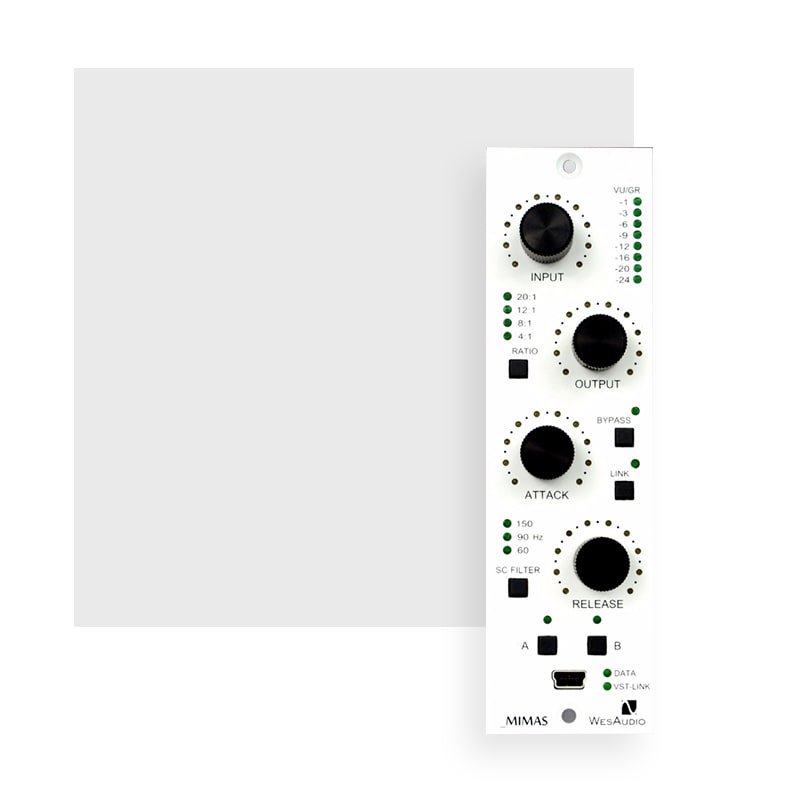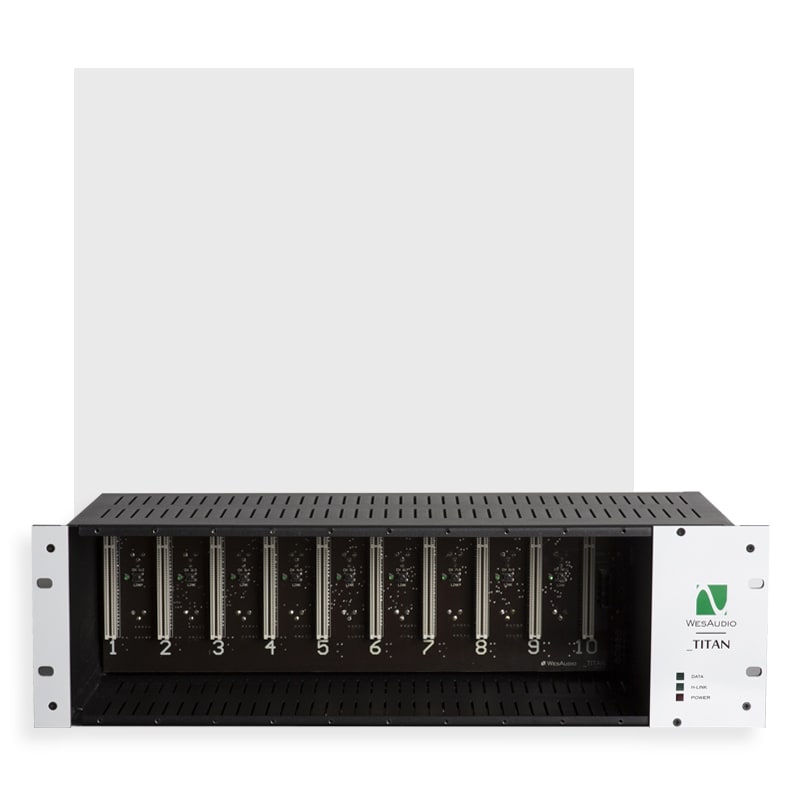ngBusComp
NEXT GENERATION BUS COMPRESSOR
Next generation bus compressor with digital recall
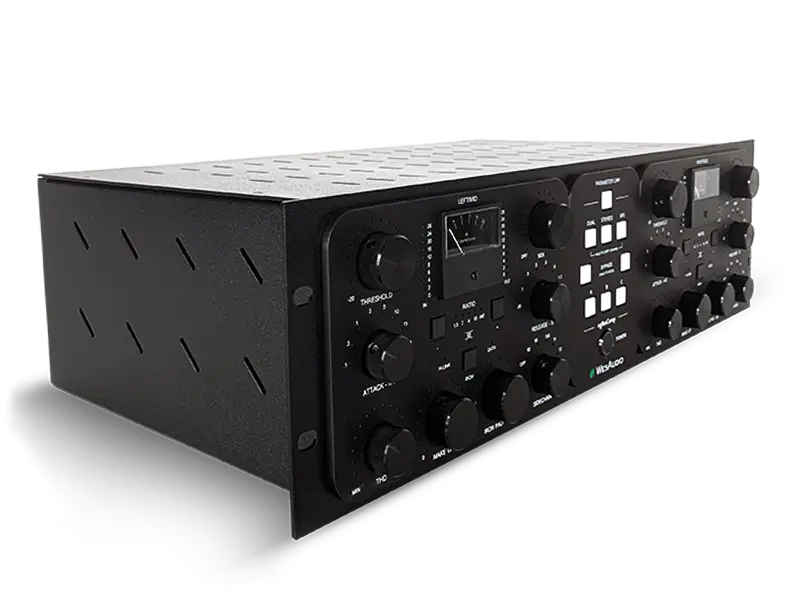
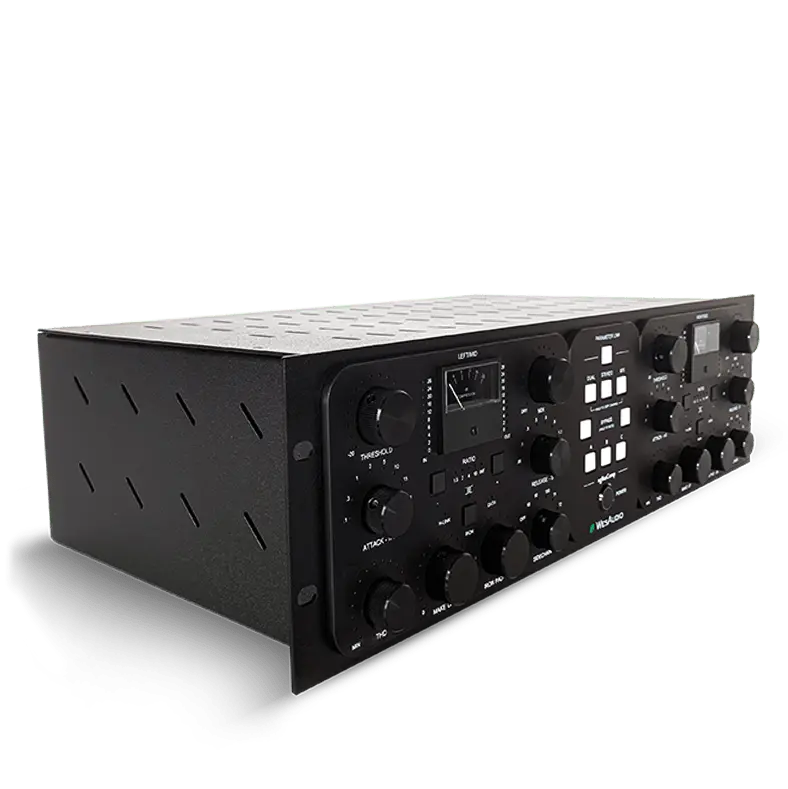
ngBusComp
Next generation bus compressor with digital recall and automation.
For over 40 years, the stereo bus compressor has been a cornerstone in mixing, often referred to as the “mix bus glue.” WesAudio elevates this classic with ngBusComp — a fully analog, dual mono, stereo, and mid-side compressor, featuring digital recall for seamless DAW integration. Experience versatile compression with Carnhill transformers, THD control, and advanced automation, blending analog warmth with cutting-edge digital precision. The ngBusComp offers a fully analog signal path with digital recall, bringing modern control to timeless sound
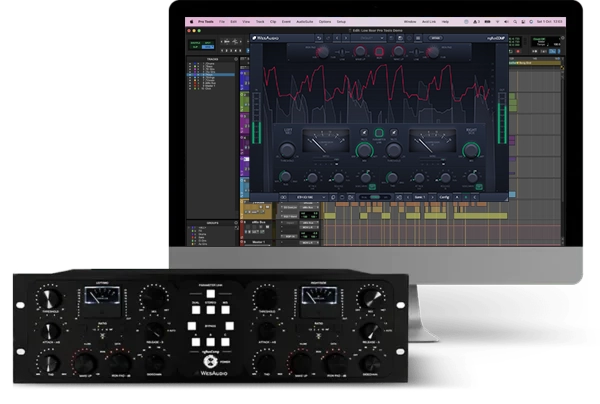
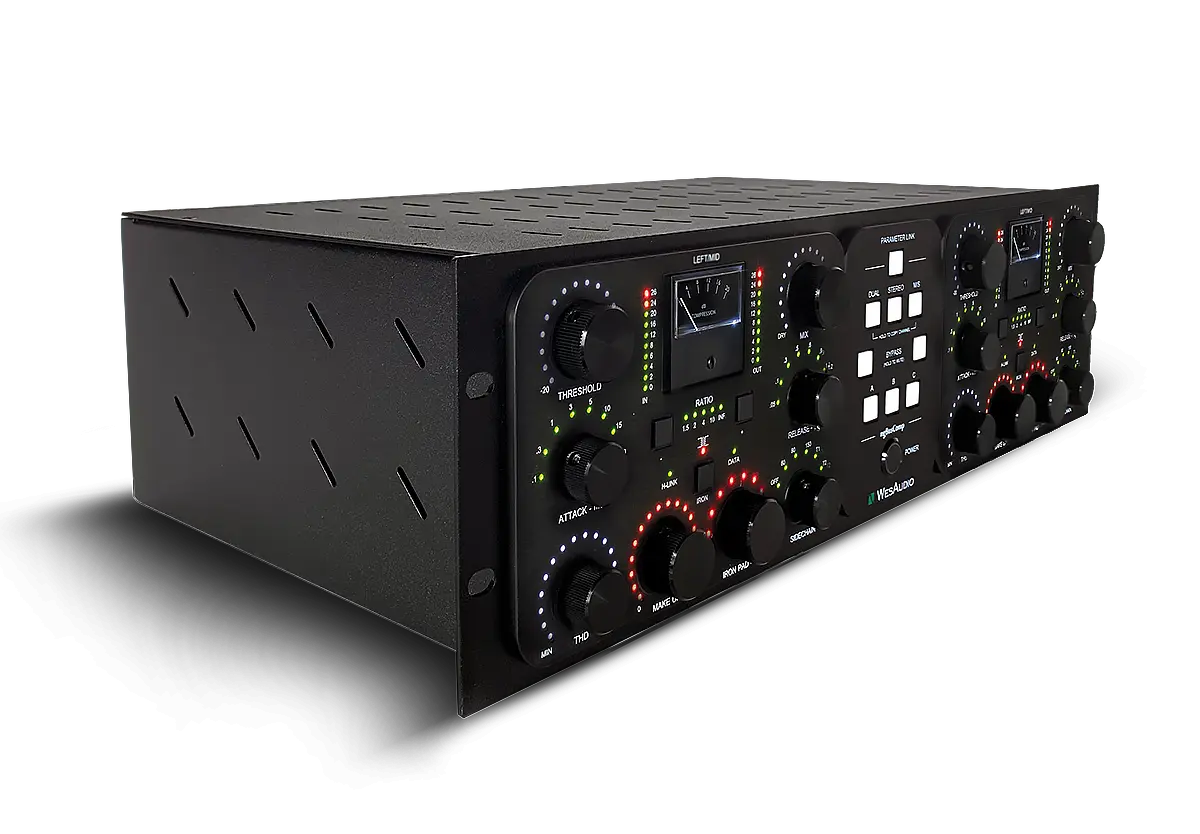
Main Features
ngBusComp fully analog compressor with digital recall.
ANALOG SOUND, DIGITAL CONTROL
True ANALOG sound with extremely convenient control!
TRUE QUAD VCA THAT 2181
The ngBusComp stands out as a fully analog device, boasting an impressive +26dBu of headroom for superior audio quality. While offering advanced digital control, the compressor maintains an entirely analog signal path, ensuring the renowned VCA compression sound.
Versatile Stereo/Dual Mono Compression
The detectors can be linked or unlinked at any time, enabling true stereo bus compression or dual mono compression as needed for ultimate flexibility.
Relative Channel Linking
The channels can be linked or unlinked at any time, allowing for independent settings on each channel while still maintaining relative control. When working in Mid-Side mode, each channel can be adjusted individually, but for quick adjustments to the overall balance, engaging the “parameter link” automatically adjusts both channels’ makeup gain while preserving the volume difference.
Flexible Mid-Side Compression Settings
The compressor offers mid-side operation, allowing you to apply different compression settings to the side channel than to the middle channel, providing greater control over the stereo image.
Selectable Output Stages
With the compressor, you have the option to choose between electronically balanced or transformer balanced output stages, with precise control over the output PAD for optimal sound shaping.
Carnhill Transformer Drive
In IRON mode, the makeup gain can be used to drive the transformers, while a dedicated output PAD allows you to attenuate the signal. The PAD, a passive attenuator controlled by a relay cascade, offers up to 15dB of attenuation in 1dB steps for precise level management.
MIX Knob: Easy Parallel Compression
With the MIX knob, achieving parallel compression is easier than ever. The ngBusComp allows you to automate the MIX setting directly in your DAW. Want to apply more compression during the chorus? It’s simple — just record automation using the touch-sensitive encoder or draw automation lines within your DAW for complete control.
Enhanced THD Control for Refined Analog Saturation
THD (Total Harmonic Distortion) enables you to saturate your signal with rich analog color. With ngBusComp, you can adjust THD from subtle warmth to prominent saturation using a dedicated knob, allowing for precise control over the distortion effect.
Predefined Sidechain Filters
The sidechain filter functionality allows you to shape the signal before it reaches the compressor’s detector. This includes three high-pass filters at 60, 90, and 150 Hz, along with two specialized tilt filters designed for fine-tuned control.
Five Ratio Settings
The compressor offers selectable ratio settings, including 1.5:1 and 2:1 for smooth mixbus compression, 4:1 and 10:1 for versatile applications, and an INF mode to aggressively clamp down on transients.
External Sidechain
The compressor allows you to create custom sidechain signals, giving you independent control over each channel for more precise compression management.
Hardware A/B/C
Even when using the compressor as a pure analog signal processor, you can seamlessly switch between three memory settings with the simplicity of a button press.
USB or Ethernet Connectivity
ngBusComp supports direct USB connection for easy setup, or you can manage it over your local network by simply connecting it to your router via an Ethernet cable.
Detailed Metering
Each channel provides detailed metering for input, output, and gain reduction. Additionally, the analog metering is fully mirrored within the plug-in instance for convenient monitoring.
Analog Automation
We’ve all wanted to adjust device settings based on different song sections, and now it’s possible! Simply draw automation lines in your DAW, and your analog device will follow suit. Plus, you can use the five touch-sensitive encoders to record automation directly into your DAW for seamless control.
Total Recall and Plugin Control
Along with its analog compression, the unit offers TOTAL RECALL, allowing instant recall of all settings for seamless workflow.
Supports VST2, VST3, AU, AAX, and AAX DSP formats, ensuring compatibility with most major DAWs for easy integration.
Full DAW integration and total recall will transform how you work, offering unparalleled control and efficiency.
Main features summary:
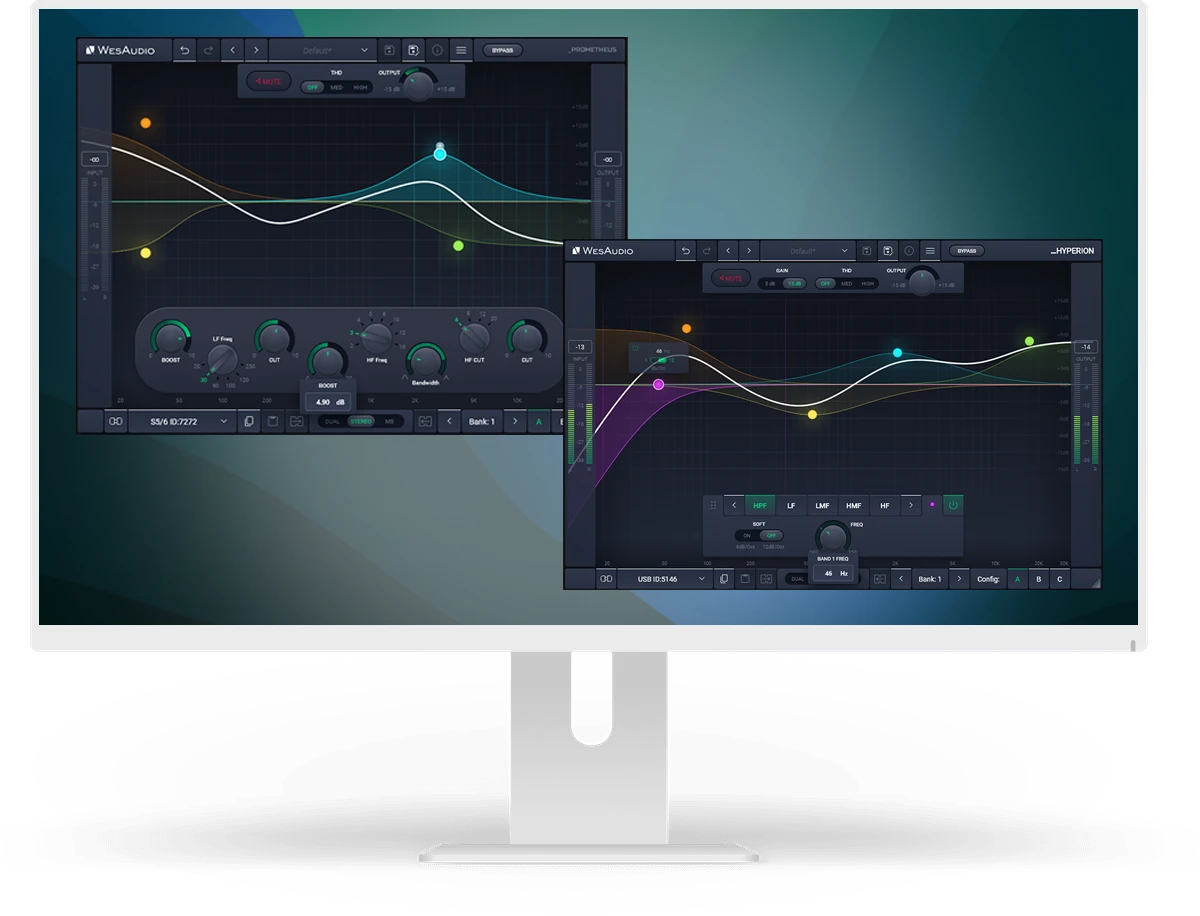
APP FOR MAC AND PC
Digital control features for fully analog units.
Specification
ngBusComp specification
| THD+N (WET) | 0.006% (1kHz,0dBu) |
| THD+N (DRY) | 0.003% (1kHz,0dBu) |
| Frequency response | 0-300kHz (-3dB) |
| Input impedance | >10kohm |
| Output impedance | < 50ohm |
| Crosstalk | > 90dB |
| Max input level | +26dBu |
| Max output level | +26dBu |
| Dynamic range | > 120dB |
| Attack | 0.1, 0.3, 1,3, 10, 30 (ms) |
| Release | 0.1, 0.3, 0.6, 0.9, 1.2, Auto (s) |
| Ratio | 1.5, 2, 4, 10, INF |
| Sidechain Filter | 60, 90, 150, T1, T2 |
| THD | 0% to 8% |
| Power consumption (MAX) | 20W |
| Dimensions | 135x483x252mm |
| Box dimensions | 274x550x382mm |
| Unit weight | 7,95 kgs |
| Box weight | 10 kgs |
| Warranty | 2 years |
User Manual
Download ngBusComp User Manual
FAQ
Frequently Asked Questions
There is no need to uninstall the WesAudio application before installing a new release. The update process will seamlessly overwrite the existing version.
To uninstall the WesAudio application, follow the steps below:
macOS:
- Navigate to the location where you downloaded the WesAudio installer.
- Open the
.dmgfile. - Hold ctrl key and right click “WesAudio Uninstall”.
- From context menu click open
- A warning message will appear, but this time the “Open” option will be available. Click it
- Follow the on-screen instructions to complete the uninstallation.
Windows:
There are two ways to uninstall the application:
Option 1:
-
Go to
C:\Program Files (x86)\WesAudio\uninstalland run the uninstaller.
Option 2:
-
Open System Settings → Apps → Installed Applications.
-
Search for WesAudio, then select and uninstall it.
After completing the process, the WesAudio application will be removed from your system.
To reinstall WesAudio software, follow these steps:
- Uninstall the current version from your computer. – For detailed instructions, refer to the FAQ section: “How to uninstall WesAudio software?”
- Download the latest version from the WesAudio website (if needed).
- Run the downloaded installer to complete the installation.
If the module doesn’t react to any changes to the knobs on the front panel, the first necessary step is to rewrite firmware into the flash memory (Factory reset procedure re-writes firmware into internal flash memory – it doesn’t affect anyhow unit configuration). To proceed with factory reset, please follow below steps:
- Connect unit either:
- Through front panel USB socket,
- Or keep the unit in ng500 chassis – _TITAN, but please note that chassis has to be connected to the PC/MAC either via USB or Ethernet cable.
- POWER OFF your 500 series chassis.
- Depends on the product please press following front panel control:
- _MIMAS – RATIO button,
- _DIONE – RATIO button,
- _RHEA – THD button,
- _PROMETHEUS – HIGH CUT encoder (top-right encoder),
- _HYPERION – LMF GAIN encoder,
- _CALYPSO – MENU encoder,
- _PANDORA – HIGH SC FILTER (right button).
- While keeping this control (button/encoder) pressed, POWER ON your 500 series chassis.
- LEDs should present a strange pattern.
- Now open GConManager:
- WIN: C:/Program Files (x86)/WesAudio/GConManager.exe
- MAC: /Applications/WesAudio/GConManager.app
- Or click on the WesAudio “Tray” icon, and select “Open GConManager”
- Go to _UPGRADE application.
- Hit start!
If the module doesn’t react to any changes to the knobs on the front panel, the first necessary step is to rewrite firmware into the flash memory (Factory reset procedure re-writes firmware into internal flash memory – it doesn’t affect anyhow unit configuration). To proceed with factory reset, please follow below steps:
- Connect the unit to either USB or Ethernet.
- POWER OFF your unit.
- Depends on the product please press following front panel control:
- ngBusComp – far left Ratio on Channel 1 (Ratio “-”),
- _TITAN – any LINK button between slot connectors,
- ngTubeEQ – THD encoder on Channel 1,
- ngTubeComp – Saturation encoder on Channel 1,
- ng76 – “IN MODE” button,
- ngLEVELER – use a small screwdriver and press button available on the rear panel via a small hole in the chassis.
- While keeping this control (button/encoder) pressed, POWER ON your unit.
- LEDs should present a strange pattern.
- Now open GConManager:
- WIN: C:/Program Files (x86)/WesAudio/GConManager.exe
- MAC: /Applications/WesAudio/GConManager.app
- Or click on the WesAudio “Tray” icon, and select “Open GConManager”
- Go to _UPGRADE application.
- Hit start!
This is a very common issue and in most cases the root cause lies in the connection of the unit and audio interface. If that happens it should be checked if audio interface input isn’t connected to the chassis input and if audio interface output isn’t connected to chassis output. As this initially would seem to be entirely wrong and shouldn’t work at all, as all our units implement “True Bypass” via relays, the unit will pass a signal when the bypass is engaged. The reason for that is that the relay is in fact hard wiring input to the output, and thus the unit will pass the signal, as it doesn’t go through any active circuit of the unit.
This is actually how it is supposed to work, so after the plug-in instance is created, please use a small triangle button which usually is on the bottom side of the plug-in and select proper HW ID from the drop down menu. If the drop down menu doesn’t list any hardware units, please check Your connectivity and other possible root causes in this FAQ.
This is a wide topic, and there may be at least several root causes, but there are few things that should be checked. However, the first and most important thing is to double check that GConManager doesn’t list this device in the _CONFIG app. If this is the case, it means that WesAudio unit can’t connect on the OS level, and some of the below steps may help:
- First of all double check if module connection is properly executed, this procedure is described here.
- USB specification indicates that USB 2.0 works up to 5 meters. This is however not entirely true, as it strongly depends on the peripherals that unit is connected to. Even if our modules are USB 2.0 compatible, your USB port could support USB 3.0 – USB is a backward compatible protocol, so it may be that USB 3.0 cable length limit should be considered which is 2 meters. We would recommend having a USB cable up to 2 meters to remove those limitations from the equation.
- USB HUB is very common root cause to those problems, if module can’t connect via HUB – just for the sake of the test, it is mandatory to connect unit directly to PC/MAC to verify if the problem isn’t caused by it.
- Please note any system warnings attached to “WesAudio Tray Icon”.
As USB controllers have limited capacity it could be a reason for random unit disconnection. Usually, it happens when a lot of USB devices are plugged into the PC/MAC. The usual behavior would be that the unit works normally, and after reboot it doesn’t, but it strongly depends on the OS implementation so exact reaction could be a little bit different. If this is suspected, just for the test, it would be good to disconnect most of the devices from the USB ports, reboot PC/MAC and double check the connectivity from stability point of view. If it leads to the conclusion that this is the root cause of the problem, we would recommend using a decent USB hub, and ideally a TB/USB dock station which tends to offload a lot of responsibilities from our PC/MAC.
If the unit was working fine, and suddenly it couldn’t connect (it is not visible in the GConManager _CONFIG app) that could lead to the conclusion that some devices were added to our USB line, and we could have problems with the USB controller inside PC/MAC. In that case please check the description in the above “Unit disconnects by itself”.
GConManager in Admin mode enables special functionalities which are used during WesAudio units calibration.
Starting from GCon 15, Admin mode can be activated through the GCon Manager app:
- Open the GCon Manager app.
- Navigate to Settings.
- Click the padlock icon to unlock the settings.
- Check the Admin Mode box to enable it.
Alternatively, Admin mode can be activated by following these instructions:
OSX:
- Please open terminal.
- Copy-Paste following command:
open /Applications/WesAudio/GConManager.app --args --admin
WINDOWS:
- Go to “START” and open “Command Line”.
- copy paste this command:
"c:\Program Files (x86)\WesAudio\GConManager.exe" --admin

